How Small Businesses Are Creating Healthy Office Spaces
Discover how three companies in the industry have reconfigured their workplaces for now and for post-pandemic life
Kate Burt
9 July 2020
Houzz UK. I'm a journalist and editor, previously for the Independent, Guardian and various magazines. I'm now excited to part of the editorial team at Houzz UK & Ireland, bringing the best of British and Irish design, interiors and architecture to Houzz.com.
Houzz UK. I'm a journalist and editor, previously for the Independent, Guardian and... More
Some of the Covid-19 precautions we’ve got used to of late may be in place for years – or permanently. So it’s still very much about a ‘new normal’ rather than a ‘back to normal’ approach in places of work. Here, business owners discuss what this means for them when it comes to office design, from desk dividers to sanitising systems – and how to manage not being able to chat over a colleague’s shoulder while they show you something on their screen.
Contributing professionals: Kia Stanford of Kia Designs; Emma Roden of Kimble Roden Architects; Tania Adir of Uncommon co-working spaces
Contributing professionals: Kia Stanford of Kia Designs; Emma Roden of Kimble Roden Architects; Tania Adir of Uncommon co-working spaces
Have you adapted your office following the various Covid-19 lockdowns?
Interior designer Kia Stanford’s company, Kia Designs, has a 1,000 sq ft office in a larger building in London. She surprised her team in the summer of 2020 with a completely redesigned space, with the focus very much on staff safety.
Kimble Roden Architects’ 30 sq m office on the outskirts of Manchester is also within a larger managed workspace, with a shared kitchen and sanitary facilities. Director Emma Roden implemented features to comply with government guidelines during the pandemic but says, “We’ve kept it simple.”
Tania Adir founded and designed the co-working space, Uncommon, which has four sites in London offering a variety of office spaces. All were adapted during 2020 to comply with the government guidelines at the time.
In addition, the company’s newest building, due to open in 2021, has registered to become the UK’s first WELL Platinum-certified flexible office. The WELL Building Standard specifies how the design and function of buildings can be optimised in order to advance human health and wellbeing, and the building will include features that aim to protect workers and visitors from Covid-19. These include thermal cameras to identify anyone entering the building with a raised body temperature.
Interior designer Kia Stanford’s company, Kia Designs, has a 1,000 sq ft office in a larger building in London. She surprised her team in the summer of 2020 with a completely redesigned space, with the focus very much on staff safety.
Kimble Roden Architects’ 30 sq m office on the outskirts of Manchester is also within a larger managed workspace, with a shared kitchen and sanitary facilities. Director Emma Roden implemented features to comply with government guidelines during the pandemic but says, “We’ve kept it simple.”
Tania Adir founded and designed the co-working space, Uncommon, which has four sites in London offering a variety of office spaces. All were adapted during 2020 to comply with the government guidelines at the time.
In addition, the company’s newest building, due to open in 2021, has registered to become the UK’s first WELL Platinum-certified flexible office. The WELL Building Standard specifies how the design and function of buildings can be optimised in order to advance human health and wellbeing, and the building will include features that aim to protect workers and visitors from Covid-19. These include thermal cameras to identify anyone entering the building with a raised body temperature.
What changes have you made?
1. Working from home
Although the Kia Designs office is large, staff have organised their home-working schedules so that only four of them are ever in at the same time.
There’s a similar arrangement at Kimble Roden. “We already had in place a flexible working ethic,” Emma says. “We have remote access working set up, so everyone can access drawing files, and we all have laptops, so working from home wasn’t a new concept for us.”
At the moment, the team is mainly still working from home. “Return to working full time in the office will be a gradual process,” Emma says, “although sometimes it’s necessary for us to come in for printing, admin and strategy planning meetings.
“The office is only part of our working environment, though,” she adds. “As a director, 50 percent of my time is spent on site or visiting clients in their homes. This has been the real shift in working patterns for us “We’re observing social distancing measures, and having meetings outside – weather permitting!”
Read more: How Businesses Are Combining Site Work With Social Distancing.
1. Working from home
Although the Kia Designs office is large, staff have organised their home-working schedules so that only four of them are ever in at the same time.
There’s a similar arrangement at Kimble Roden. “We already had in place a flexible working ethic,” Emma says. “We have remote access working set up, so everyone can access drawing files, and we all have laptops, so working from home wasn’t a new concept for us.”
At the moment, the team is mainly still working from home. “Return to working full time in the office will be a gradual process,” Emma says, “although sometimes it’s necessary for us to come in for printing, admin and strategy planning meetings.
“The office is only part of our working environment, though,” she adds. “As a director, 50 percent of my time is spent on site or visiting clients in their homes. This has been the real shift in working patterns for us “We’re observing social distancing measures, and having meetings outside – weather permitting!”
Read more: How Businesses Are Combining Site Work With Social Distancing.
2. Desks
Kia has increased desk sizes and the spaces between them. “Now everyone pretty much has two desks instead of one – at a width of 240cm – and no one sitting opposite them. Instead, they’ll be at a diagonal with the next person and at least two metres apart.”
Kia also installed a taller reception desk. “It used to be more face-to-face, but now there’s more space around it, so someone could easily be two metres from the reception staff,” she says. “The desk is also larger than it would otherwise have been to help maintain that distance.”
Kia also thought about how staff and visitors will move around the office. “Now when clients come in, they’ll go to the left side of the office only, while staff will all be on the right, meaning they don’t need to cross into each other’s spaces,” she explains.
Emma says they’ve introduced Perspex barriers between desks in their office.
Kia has increased desk sizes and the spaces between them. “Now everyone pretty much has two desks instead of one – at a width of 240cm – and no one sitting opposite them. Instead, they’ll be at a diagonal with the next person and at least two metres apart.”
Kia also installed a taller reception desk. “It used to be more face-to-face, but now there’s more space around it, so someone could easily be two metres from the reception staff,” she says. “The desk is also larger than it would otherwise have been to help maintain that distance.”
Kia also thought about how staff and visitors will move around the office. “Now when clients come in, they’ll go to the left side of the office only, while staff will all be on the right, meaning they don’t need to cross into each other’s spaces,” she explains.
Emma says they’ve introduced Perspex barriers between desks in their office.
While hot-desking isn’t directly relevant to Kia’s team, there is a hot-desking area in the building, which rents space to other businesses. “We pushed [the management] to make everything Covid-secure, as our team might otherwise come into contact with people who’ve been using the hot-desking area,” she says. “People have now been given dedicated desks for at least six months.”
Tania says their design and operations team is ready to tailor workspaces, on request, to include non-standard desk sizes and desk separators, as well as providing advice on optimising office layouts in line with current spatial guidelines and implementing recommended signage.
Tania says their design and operations team is ready to tailor workspaces, on request, to include non-standard desk sizes and desk separators, as well as providing advice on optimising office layouts in line with current spatial guidelines and implementing recommended signage.
3. Meetings
To enable collaborative working, Kia has introduced a 65in television with Apple TV installed. “When anyone is having a ‘what do you think about this?’ moment, they can now flip their own computer screen straight onto the TV, so no one has to be right next to each other or looking over shoulders.” There’s also a large table in the presentations area.
Tania says that at existing sites, “We’re reducing the number of seats in each meeting room to ensure reduced occupancy and safer distancing.”
Read more: Here’s How Three Houzz Pros Work With Clients Remotely.
To enable collaborative working, Kia has introduced a 65in television with Apple TV installed. “When anyone is having a ‘what do you think about this?’ moment, they can now flip their own computer screen straight onto the TV, so no one has to be right next to each other or looking over shoulders.” There’s also a large table in the presentations area.
Tania says that at existing sites, “We’re reducing the number of seats in each meeting room to ensure reduced occupancy and safer distancing.”
Read more: Here’s How Three Houzz Pros Work With Clients Remotely.
4. Sanitising
In Tania’s offices, hospital-grade sanitising is being introduced. “Our procedure releases a fine mist of a chemical cleaning solution into the air, which then spreads throughout the space and settles on every surface, such as keyboards, door handles and light switches,” Tania says. “It keeps surfaces virus-free for up to 30 days and is currently successfully tested and used by TfL [Transport for London] and the NHS.”
Hand sanitiser dispensers are also installed in all frequently used touch areas, such as near lift buttons and doorways. “We have PPE available from the front desk on request,” Tania says.
Emma and Kia both opted to place hand sanitisers at each desk. Emma also put up posters to remind everyone to wash their hands frequently.
When staff initially returned in 2020 for a few months of increased time in the office, Kia gave every member of staff a ‘welcome back’ pack with masks for travel and hand sanitiser. While she says her team won’t wear masks in the office, where they can now easily socially distance, they will do so for external meetings. “But if team members are not comfortable doing client meetings, we won’t do them,” she adds.
In Tania’s offices, hospital-grade sanitising is being introduced. “Our procedure releases a fine mist of a chemical cleaning solution into the air, which then spreads throughout the space and settles on every surface, such as keyboards, door handles and light switches,” Tania says. “It keeps surfaces virus-free for up to 30 days and is currently successfully tested and used by TfL [Transport for London] and the NHS.”
Hand sanitiser dispensers are also installed in all frequently used touch areas, such as near lift buttons and doorways. “We have PPE available from the front desk on request,” Tania says.
Emma and Kia both opted to place hand sanitisers at each desk. Emma also put up posters to remind everyone to wash their hands frequently.
When staff initially returned in 2020 for a few months of increased time in the office, Kia gave every member of staff a ‘welcome back’ pack with masks for travel and hand sanitiser. While she says her team won’t wear masks in the office, where they can now easily socially distance, they will do so for external meetings. “But if team members are not comfortable doing client meetings, we won’t do them,” she adds.
5. The communal kitchen
Kia says not being able to do a tea round will be one of the biggest changes to office life. “‘Top up?’ is our most-used phrase,” she says. The office already had a dishwasher, but now everything will be put on a hotter wash twice a day. “The kitchen area is also open and really large,” she adds, “so two people can still have lunch together in there.”
In Tania’s offices, shared kitchens remain, but with new precautions in place. “We’ve introduced a heightened level of cleaning and hygiene control throughout all food and drink prep areas,” Tania says. “Our staff will be wearing masks and gloves when preparing orders for a contactless collection.”
Kia says not being able to do a tea round will be one of the biggest changes to office life. “‘Top up?’ is our most-used phrase,” she says. The office already had a dishwasher, but now everything will be put on a hotter wash twice a day. “The kitchen area is also open and really large,” she adds, “so two people can still have lunch together in there.”
In Tania’s offices, shared kitchens remain, but with new precautions in place. “We’ve introduced a heightened level of cleaning and hygiene control throughout all food and drink prep areas,” Tania says. “Our staff will be wearing masks and gloves when preparing orders for a contactless collection.”
6. Lifts
“We ask our members to take the stairs whenever possible, and to prioritise those unable to use stairs,” Tania says and the number of people using a lift at any one time is limited.
“We ask our members to take the stairs whenever possible, and to prioritise those unable to use stairs,” Tania says and the number of people using a lift at any one time is limited.
What’s the future?
In talking to others in the industry, Emma believes the pandemic has changed approaches to at-home working. “With reduced commuting times, it’s a much more efficient way for people to spend their time, and from a global sustainability point of view, it makes total sense,” she says.
“The bigger question is how remote working will affect people’s mental health – also a huge topic of consideration for employers. I think there will need to be a balance between working from home and coming together in an office to maintain a sense of community,” she says. “Social isolation is not a positive thing generally. Human beings are social creatures. To give that up completely in a workplace could be detrimental to employees’ mental health.”
In talking to others in the industry, Emma believes the pandemic has changed approaches to at-home working. “With reduced commuting times, it’s a much more efficient way for people to spend their time, and from a global sustainability point of view, it makes total sense,” she says.
“The bigger question is how remote working will affect people’s mental health – also a huge topic of consideration for employers. I think there will need to be a balance between working from home and coming together in an office to maintain a sense of community,” she says. “Social isolation is not a positive thing generally. Human beings are social creatures. To give that up completely in a workplace could be detrimental to employees’ mental health.”
“We’re actually based in a small village south of Manchester,” Emma continues, “and I think locations like ours will become more popular, as offices look to take on smaller premises outside of city centres.
“I do worry that city centres will [experience] a hiatus if people are diverted from using them for work, but long-term they will hopefully become car-free leisure zones and this will encourage more families to live in and use them,” Emma says. “I imagine shared office spaces, conference spaces and serviced office space that companies can use on an ad hoc basis will become very popular.”
Tell us…
What precautions has your office taken to remain a healthy environment during and beyond the pandemic? Let us know what you’re doing in the Comments.
“I do worry that city centres will [experience] a hiatus if people are diverted from using them for work, but long-term they will hopefully become car-free leisure zones and this will encourage more families to live in and use them,” Emma says. “I imagine shared office spaces, conference spaces and serviced office space that companies can use on an ad hoc basis will become very popular.”
Tell us…
What precautions has your office taken to remain a healthy environment during and beyond the pandemic? Let us know what you’re doing in the Comments.
Related Stories
Business Talk
How to be a Truly Sustainable Interior Designer
Find out the key things you can do to reduce your and your client’s carbon footprint both during and after a project
Full Story
Business Talk
How to Produce a Compelling Newsletter for Your Business
By Becky Harris
Experts share 10 tips for engaging prospective and current clients with email newsletters
Full Story
Research
What Are the Budgeting Habits of UK Renovation Clients?
Discover how UK homeowners spend their money, finance their projects and manage the costs
Full Story
Business Talk
10 Tips for Building Good Relationships With Other Pros
Industry professionals share how to find the right people to work and form bonds with when collaborating on projects
Full Story
Business Talk
5 Ways to Attract More Clients to Your Renovation Business
Find out what homeowners are looking for when hiring a design professional for their project
Full Story
Kitchens
Which of These Kitchen Renovation Trends Would You Choose?
By Kate Burt
The 2024 Houzz Kitchen Trends Report is out. Dive into the highlights to see what’s topping your choices
Full Story
Renovating
Best of Houzz 2024: The Winning Design Projects
The Best of Houzz 2024 award winners have been announced. Take a look at some of the winning designs
Full Story
Trade Fairs
What Are the Surface Trends for 2024 and Beyond?
Discover the key themes that will be influencing surface materials in the year ahead
Full Story
Trade Fairs
Key Interiors Trends from the 2024 Maison&Objet Design Fair
For its 30th birthday edition, the trade show turned its focus to the link between nature and technology
Full Story
Renovating
What Are Your Renovation Plans for the Year Ahead?
By Kate Burt
Are you moving or staying put, cancelling renovations or forging ahead – and, if so, with what type of project?
Full Story


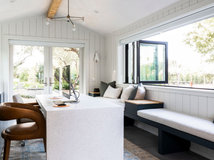

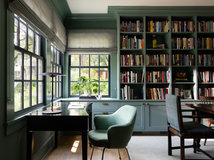
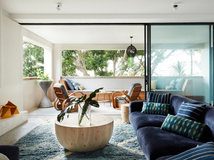
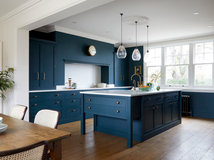

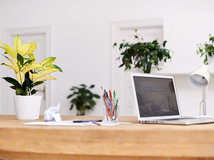
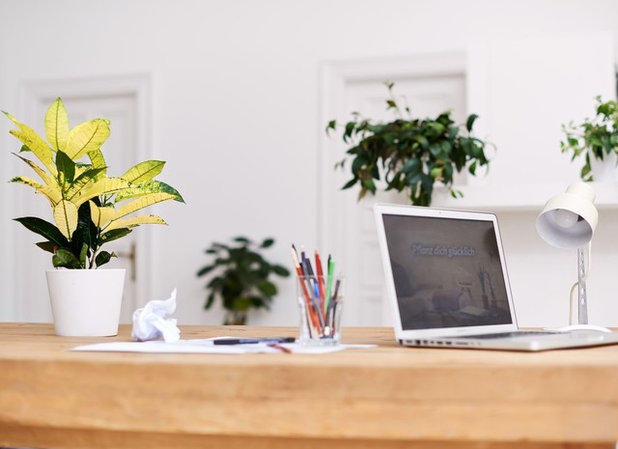
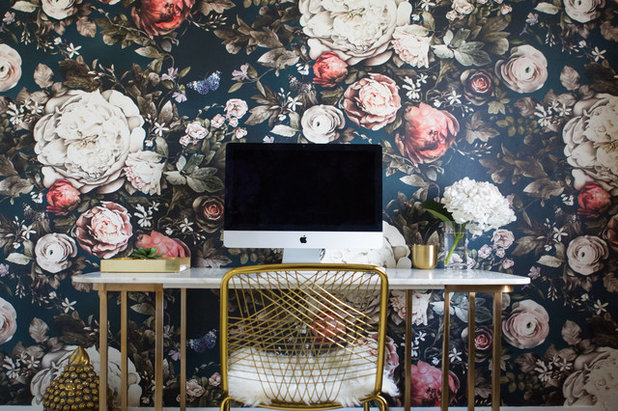
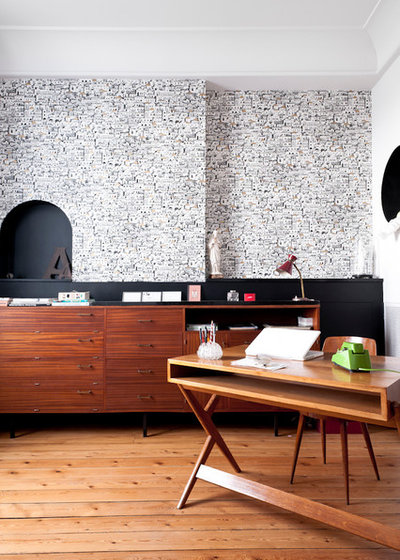
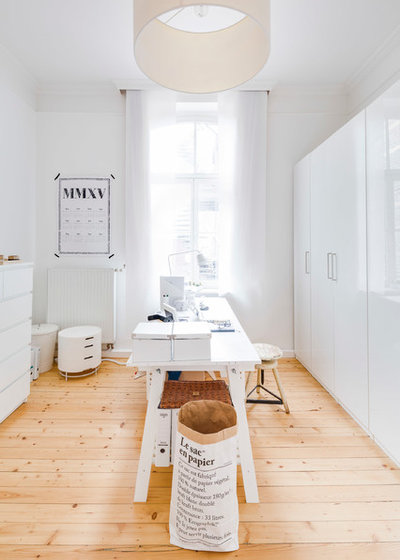
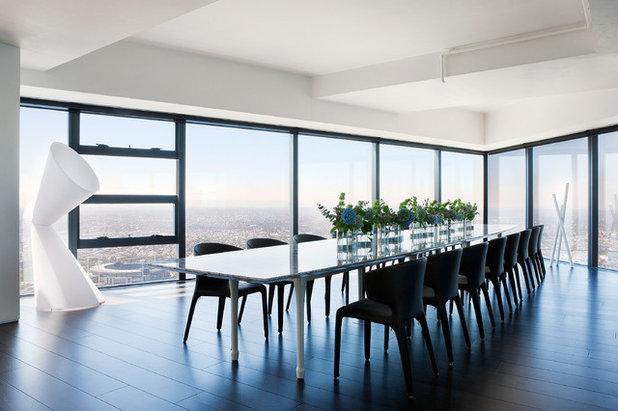
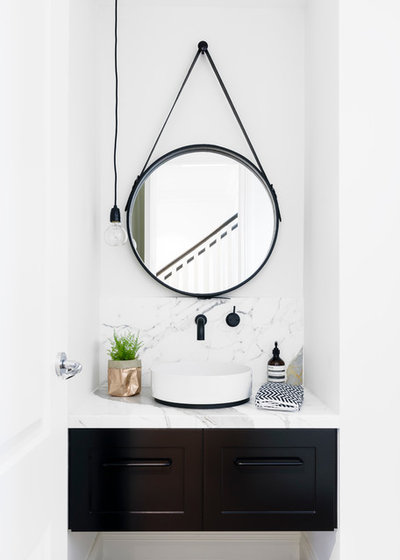
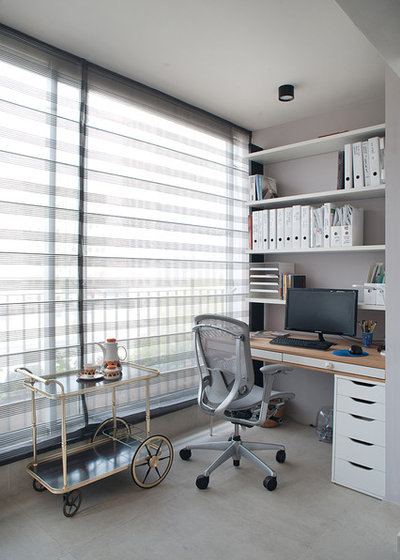
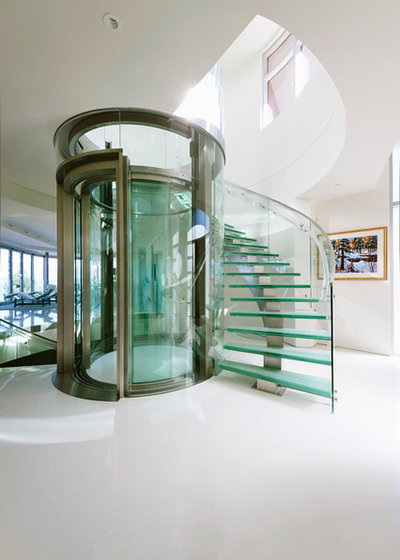
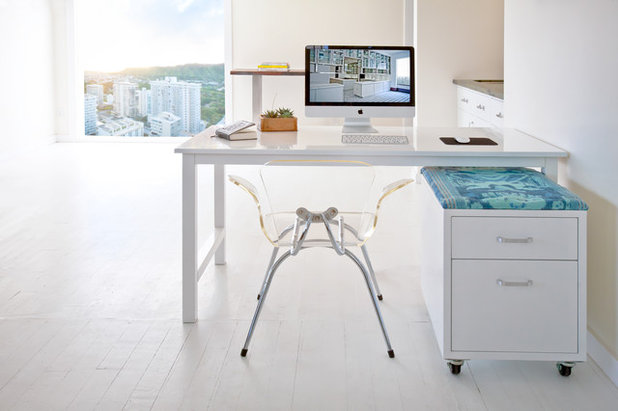
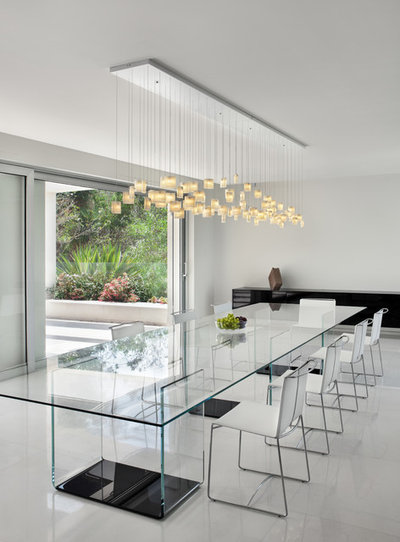

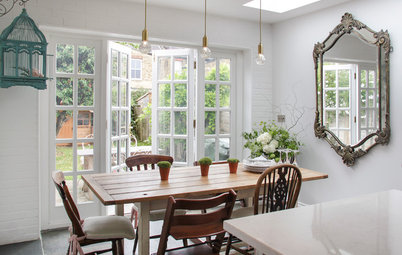
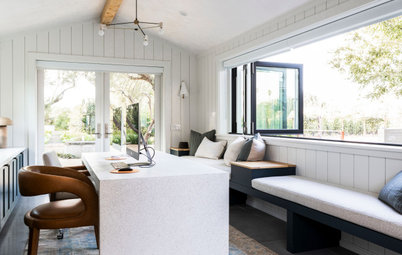
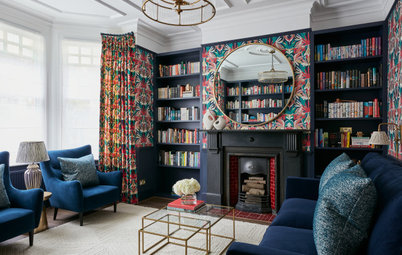
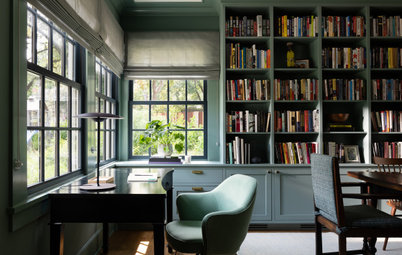

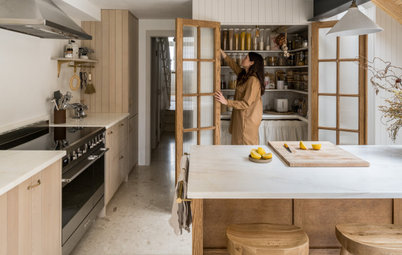
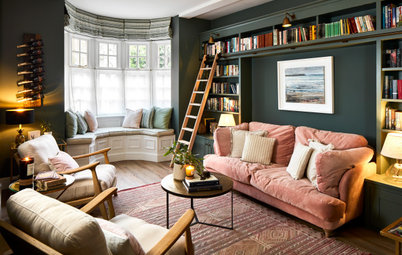
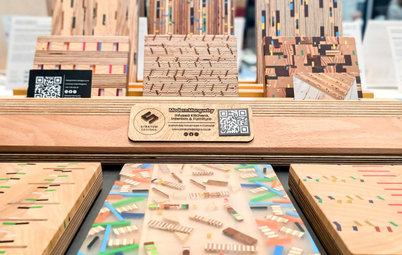
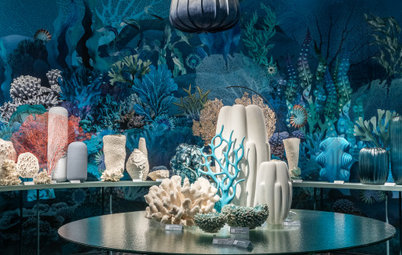
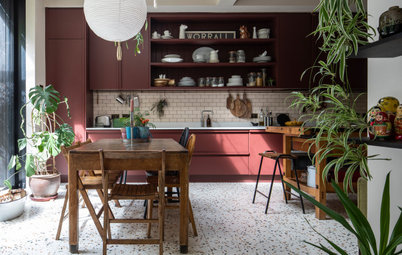
All looks nice but as an osteopath there are some shocking chairs on display in this article - what were they thinking. Health is a bit more important than what it looks like and some pictures of ergonomically designed spaces would be much more useful for people. You have a large platform please make sure you use it to promote good practice.
great